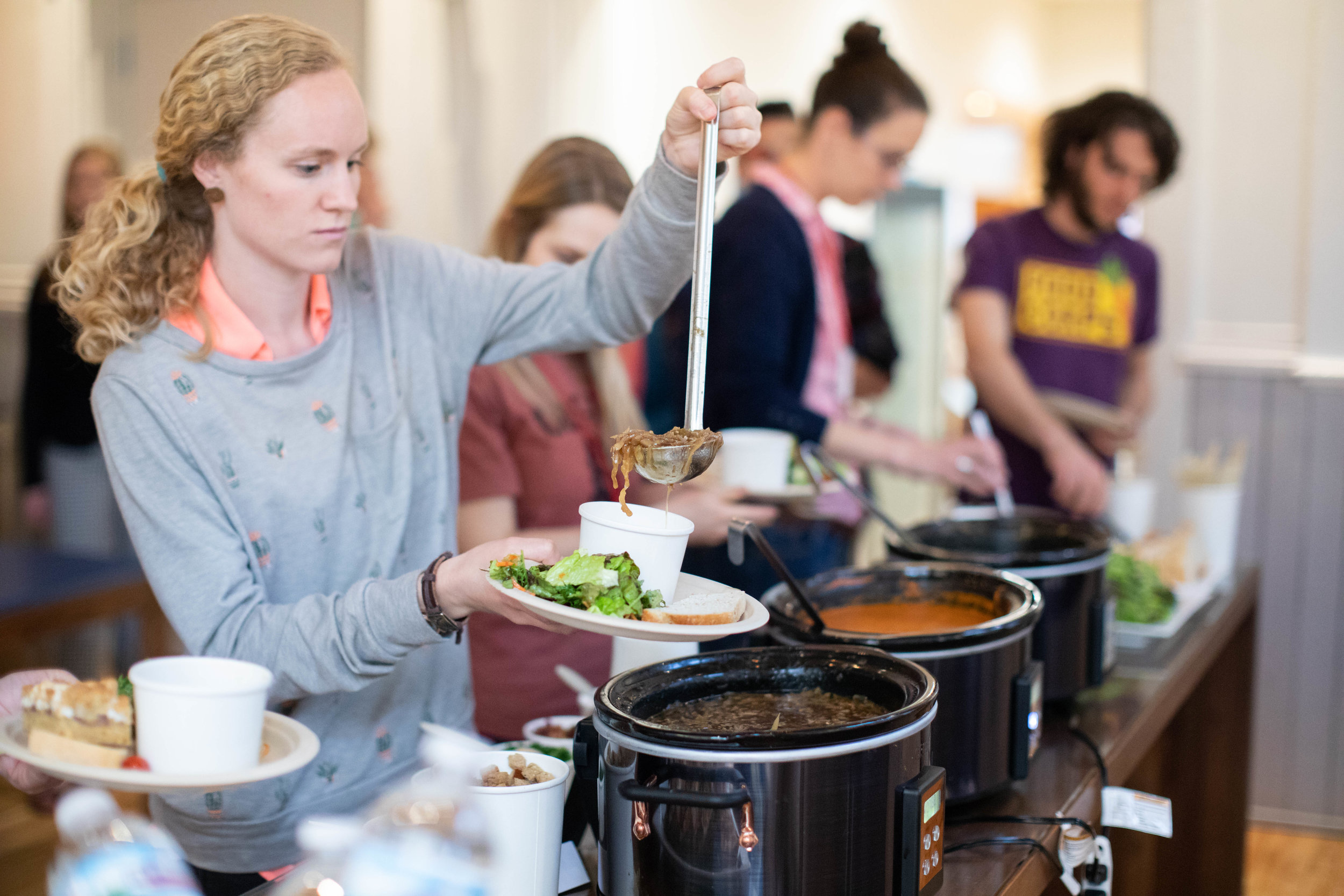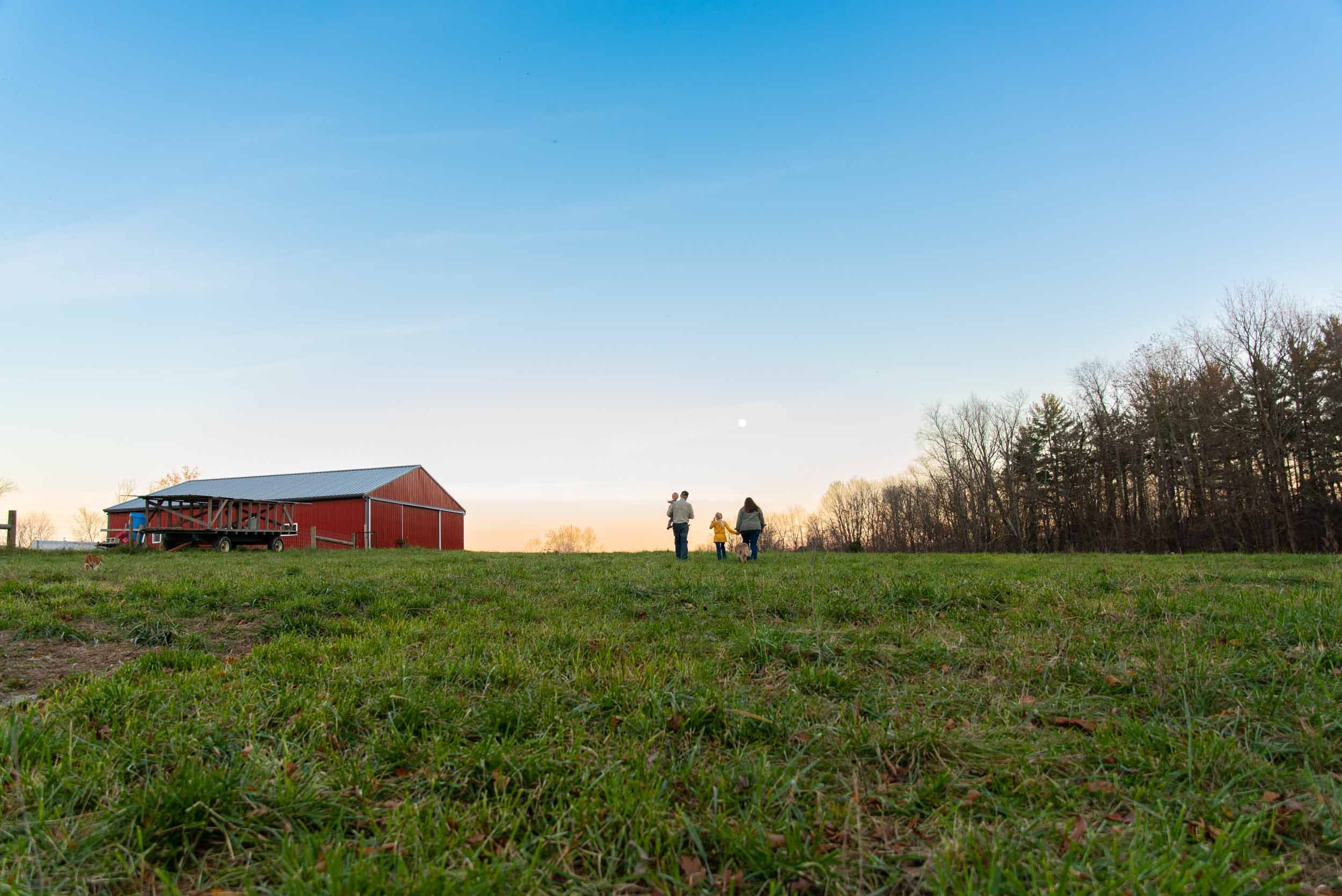Farm the City

In Cincinnati, urban agriculture is taking root, one plot and program at a time.
photographs by Natalie Jeanne
Farming in urban areas has a long history in societies. After all, the domestication of plants gave rise to the first human settlements—our original cities were literally rooted in agriculture. Since then, city life has parted ways with it almost entirely, as urbanites have become almost completely disconnected from their food sources. But the reintegration of farming into the city is beginning to close the circle.
The Food and Agriculture Organization of the United Nations reports that 800 million people worldwide grow vegetables or fruits or raise animals for food in cities, producing what the Worldwatch Institute reports to be an astonishing 15%–20% of the world’s food. In developing nations, city dwellers farm for subsistence, but in the U.S., urban farming is more often driven by capitalism or ideology.
The U.S. Department of Agriculture doesn’t track numbers of city farmers, but based on demand for its programs that fund education and infrastructure in support of urban farm projects, and on surveys of urban farming in select cities, it affirms that business is booming. How far—and in what direction—can this trend go in Cincinnati? What portion of our city’s food can local farmers grow, at what price, and who will be privileged to eat it? And can such projects make a meaningful contribution to food security in case of a natural disaster or some other disruption in the supply chain?
In Greater Cincinnati, the combined desire for better food and solutions to climate change has moved to the forefront of many people’s conversations. Today, to resolve both of these issues, individuals, local government, urban planners, and consumers are trying to find ways to bring farming back big-time into our city.
The goals of urban farming are to reduce the number of miles that food travels, to make healthier foods more readily available, and to provide more food stability within urban areas. It also creates greener spaces within a city, curbing environmental issues like stormwater runoff and heat islands. How this is done takes on different forms in different places, and while Cincinnati doesn’t yet rival Detroit or Cleveland in terms of its urban farming infrastructure and production, there are some promising projects, policies, and ideas percolating.
Local government plays a vital role in the ultimate success or failure of any urban farming movement. An innovative interdepartmental collaboration, Urban AgricultureStat, launched in June 2017 with a motion passed by Cincinnati City Council. Its goal is to expand Cincinnati’s urban agriculture footprint and invest in ways to develop blighted properties for the purpose of urban farming.
For several years, Cincinnati’s Urban Agriculture Grants have been made available through the federal Community Development Block Grant-funded Vacant Lot Reutilization (VLR) Program, an initiative that was part of the city’s 2015–2019 Consolidated Plan. The program was created to address vacant lots created by building demolition in eligible low- to moderate-income census tracts, filling those spaces with an urban garden or a pocket park. The city’s Department of Community and Economic Development Monitoring and Compliance Division manages this program. In 2017, DCED partnered with the Office of Environment and Sustainability to combine $30,000 in Community Development Block Grant (CDBG) funds and $28,000 in general funds specifically for urban agriculture to focus the VLR on new urban gardens in eligible census tracts. The City received 49 applications and was able to partially fund 45 requests—seven through CDBG and 29 through general fund dollars.
Know Your Farmer
There are several models for urban farming in Cincinnati, each filling a different niche in the local food system, and each with different requirements. There are personal gardens, community gardens, market gardens, urban farms, and indoor farms. A few examples include:
Waterfields. Launched in November 2013 (by a leadership group that includes Dr. Victor Garcia; see Last Word on page 56), Waterfields hydroponically grows premium microgreens and specialty produce year round. As a social mission driven start-up, it seeks to translate demand for its products into living-wage jobs for local residents in struggling urban areas such as Price Hill and St. Bernard. While already selling locally to more than 100 leading restaurants and caterers, it’s also expanding beyond Cincinnati with distribution in Dayton, Cleveland, Columbus, Louisville, and Nashville. Last fall, Waterfields opened its fourth production facility in a 10,000-square-foot space in a former meat distribution warehouse off of Mitchell Avenue. Waterfields is also part of the “smart farming revolution” in which technology is helping farmers get more value out of their resources through information technology, mobile phones, apps, and the internet. Capturing a boatload of sales and production data helps Waterfields and other smart farming operations more accurately forecast future needs and trends, thereby enabling them to make wise business choices.
Camp Washington Farm. Established in 2014 at the 2-acre site bounded by Valley Park, River City Correctional Center, Monmouth Bridge, and I-75, this urban farm is a classic example of the sheer difficulty of a start-up urban farm. Its mission—to increase access to locally produced food for residents in the Camp Washington-area food desert—has been challenging to attain for a variety of reasons. It is difficult to maintain an urban farm long term when paid staff must also rely on volunteers. Building soil health and access to water are also challenges farmers often face when attempting to grow productively in urban areas.
80 Acres. This operation addresses urban space constraints the way developers have for centuries: by going up instead of out. As Cincinnati’s first true foray into vertical farming, 80 Acres has real money and real business leadership with mainstream food company experience behind it. Using efficient technology and vertical growing systems, 80 Acres Farms will leverage its quarter-acre building in Spring Grove Village into the equivalent of a 50-acre farm. These high-tech growing operations substitute LED lighting, mineral solutions, and other calibrated artificial conditions for the soil, sun, and horizontal space of traditional farming, and are often able to grow 75% more food on the same sized footprint by stacking their operations.
80 Acres represents one model that may answer the question of what urban farming would have to look like in order to feed a substantial percentage of a city. It produces a lot of food in a small space, to be sure. But until economies of scale kick in, these operations—which are capital-intensive to build and maintain and consume enormous amounts of energy—must concentrate exclusively on high-value crops like microgreens, winter tomatoes, and herbs. Still, founding member Mike Zelkind says he believes this is the first truly disruptive technology and concept in food to emerge in a long, long time.
Permaganic. As redevelopment accelerates in more Cincinnati neighborhoods, some worry that other types of land use practices will begin to encroach onto parcels currently used or well-suited for agriculture. The best example of this is the Permaganic growing site in Over-the-Rhine. Permaganic (formerly the Eco-Garden) is the longest-running urban agriculture program in Cincinnati. It has added to the quality of life in OTR by expanding residents’ access to fresh, local produce, and by providing training programs and employment stipends for hundreds of local teenagers.
Permaganic has thus far survived an effort by developers to build condos on its farm site, but this kind of constant pressure has sapped a considerable amount of energy from the program, as it was forced to fight development plans. And because of the uncertainty, fundraising lagged. “We didn’t get bulldozed out this time,” says Luke Ebner, program director, “but until we actually own the site, we’re always going to be vulnerable to developers.”
Plans for the future now include opening a storefront in a vacant building on the site where Permaganic will offer year-round classes, events, cooking demonstrations, and a sales outlet, in addition to an existing CSA, for its products.
Urban agriculture programs like Permaganic, which farm vacant properties, are often forced to move or close when those lots are redeveloped. Permaganics director Luke Ebner (right) hires neighborhood teens.
The Abundance Box. The idea for the Abundance Box began in December of 2016, after the Walnut Hills neighborhood found out that the local grocery store would be closing. Using milk crates, the Abundance Box creates modular intensive gardens as a way of getting fresh produce into the hands of those lacking easily accessible food. It allows gardeners to utilize minimal space and tight areas like apartment buildings by creating a stackable, lightweight production system.
Kaia Goodwin, creator of the program, knew that coming up with an alternative option for access to fresh produce was going to take time, so she started to think about how to get food directly into the hands of people. “One of the easiest ways to do that is through home gardening,” Goodwin says. “So, the idea really started there and evolved as I began working with others, like People’s Liberty, on the concept.” Since launching her program in September 2017, Goodwin has distributed more than 100 boxes to neighborhood residents. “I had no idea this would evolve into a nonprofit with a community-based festival, so I think the entire project has been vastly more successful than I could ever have imagined,” Goodwin says.
Community Gardens. Though they don’t get as much press as for-profit farms and heavily capitalized vertical farming, community gardens—which are collectively tended by people using individual or shared plots of public or private land, and have been a feature in U.S. cities for well over a century—are the most common form of urban farming in our region and across the nation, producing far more food and feeding more people, in aggregate, than their commercial counterparts.
As social enterprises, community gardens operate in an alternate financial universe: They don’t sustain themselves with sales, nor do they have to pay employees. The Civic Garden Center alone has more than 50 community gardens in a network that it helps to sustain, adding more neighborhoods annually.
Significant Impact
Each year, residents of the Cincinnati region spend more than $5 billion on food.
Most of that money leaves the region to pay for food from far away. If Cincinnati could produce even 20% of our region’s food (it’s presently less than 5%), farmers and gardeners would capture a market share worth $1 billion per year.
Finding sustainable alternatives to sourcing life’s basic necessities will require that we vote with our pocketbooks and support sustainable solutions, even if they might not yet be the most convenient or the cheapest. One way you can support changes in the food system is to get some of your food from urban farms or by joining a community garden in your neighborhood.
Whether or not cultivating fruits and vegetables in tiny urban spaces makes economic or food-security sense, people who want to grow food in cities will find a way to do so. City gardens and farms are part of our ideal sense of what a community should be. And so their value is priceless.
Still, producing affordable food consistently with sustainable methods in confined space takes a really long time to do well. Let’s hope enough of these innovative local efforts survive to do it well enough to make a real difference soon.
A native of a rural farming community in northwest Ohio, Karen has spent more than 30 years writing grants and begging for money for a variety of good causes in southwest Ohio. She is currently at work on a sitcom about the crazy cast of characters one finds at a popular urban public market in the Midwest. She’ll work for pie or a good pot of soup.






